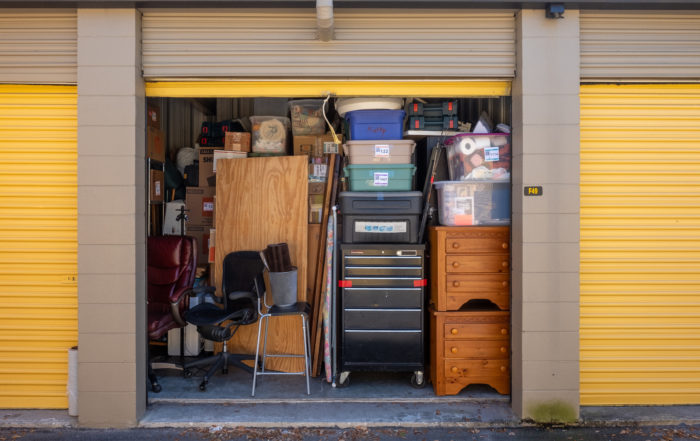Essential Steps for Taking Your Boat Out of Storage
According to the groundhog Punxsutawney Phil, winter will endure well into March. But after a childhood run-in with a groundhog, I don’t trust him, and he should subsidize my Prozac medication. Spring has begun, the waters are heating up, and boats are being towed back to the lake. However, taking a boat out of storage without checking taking precautions can be dangerous or lead to repairs. We have previously covered how to take your car out of storage, but today’s blog isn’t for lumpy land-lubbers and their coffins-on-wheels. Follow these steps and your vessel will be in good shape for the sunny months following boat storage.

General Cleaning
Dust, moisture, and a tarp covering can lead to some minor wear on the paint and upholstery. As my mother used to say, “Clean your boat!”
- Clean upholstery with a mild detergent
- Wash and wax the hull. Check for scratches and abrasions and fill them in as necessary
- Clean the windshield and make sure the windshield wipers work
- Polish all metal surfaces
- Check if the drains and scuppers are clear and the metal isn’t rusted
- Clean off the life jackets and inspect for tears and ensure the fire extinguisher is in working order.
- If you have a microwave, stove, or refrigerator, clean them and make sure they are working. This isn’t just so you can enjoy these luxury items–many boats have been damaged or lost to malfunctioning equipment fires
Engine and Fuel System
Checking the engine for any wear is paramount. Be thorough, as any damage can lead to expensive repairs and potentially dangerous breakdowns on the water. Bring a mechanic or a friend with more expertise if you don’t feel comfortable examining the engine. Again, this an extremely important step after boat storage.
- Check whether the fuel hose is brittle, soft, or cracked. Leaks affect performance and corrode other engine surfaces.
- Pump out any fluid that may still be in the engine tank
- Change the fuel filters and add new engine oil
- Replace transmission and power steering fluids
- Check all hose connections and various clamps. Make sure they are secure and clean/replace as necessary
- Flush the cooling system and add new coolant
- Change transmission fluid
- Replace spark plugs
- Inspect fuel tank for leaks and oil all moving parts
- Check propeller for cracks or rust, and that it is connected and secured
- Probably replace the spark plugs for good measure
Electrical Systems
The electrical components are highly interconnected with other parts of the boats. Failure to inspect them is a major cause of many boat repairs. Again, this is another step that you need to be comfortable with or bring in someone with more expertise.
- Recharge the battery or remove trickle charger
- Check the battery’s water level and refill in necessary
- Check that all wire connections are secure and free of wear, then clean and lubricate
- Make sure dashboard lights are working
Double Check for Necessary Equipment
Many people are more focused on making sure the boat is in working order and forget about having the right safety and navigational equipment. Double-checking doesn’t take long and shouldn’t be neglected after long-term boat storage.
- Life-Jackets: right number and sizes
- Working compass
- Filled and working fire extinguisher
- Carbon Monoxide detector for enclosed spaces
- Sound signaling device and radar detector
- Current insurance information
Belts, Hoses, and Water Tank
Worn belts and hoses and broken water tanks are a common cause of breakdowns on the water after boat storage. Without them, you’ll need to be towed back into the shore. Rescue boat operators are usually very nice and chatty, great for lonely people looking to swap stories–but they won’t front the bill.
- Belts shouldn’t be brittle, cracked or loose. Make sure the belts are wrapped tightly around pulleys and are not wearing thin. They will rub off a black residue if they are too thin
- Flush water tank and check for any leaks
- Flush hot water tank and run it to make sure both the AC and engine connections are operating
Sailboats
There are several more steps for the true mariners taking a sailboat out of boat storage. Those with a motorboat should listen up, too, and be inspired to hit the high seas in a real boat.
- Check for wear: abrasions, tears, loose seams, etc.
- Check all sail attachments, battens and bolt ropes
- Inspect all metal for rust or fraying on the surrounding fabric
- Check masthead pulleys and ropes
- Inspect all of the reefing
Hit the Water Captain!
The rolling waves, sea breeze and warm sun are waiting for you, my friend. However, if you don’t take care of your boat after winter storage, you may run into trouble on the water. The sea is unforgiving, and so am I. Don’t expect my help if your boat breaks down and your friends and family blame you for ruining their day on the water. Don’t be Captain Let-the-self-storage-blogger-down.
If you want to store your boat with the most reliable and safe self-storage company in Albuquerque, contact us today and we’ll make sure you receive the best possible service.
Recent Posts
Understanding Self-Storage Lease Terms: What to Know Before You Sign
Renting a self-storage unit is often one of those tasks that feels simple at first—pick a unit, sign a lease, move your stuff in. But if you’re like most people, the fine print on that [...]
What Not to Do When Using a Self-Storage Unit: 9 Common Mistakes to Avoid
Self-storage units are a convenient and affordable way to store everything from furniture and keepsakes to business inventory and seasonal gear. Whether you’re moving, downsizing, or just trying to declutter your space, renting a storage [...]
How to Keep a Storage Unit Clean and Tidy
A self-storage unit can be a lifesaver when you need extra space, but without proper organization and upkeep, it can quickly become cluttered. A clean and tidy storage unit not only makes it easier to [...]



